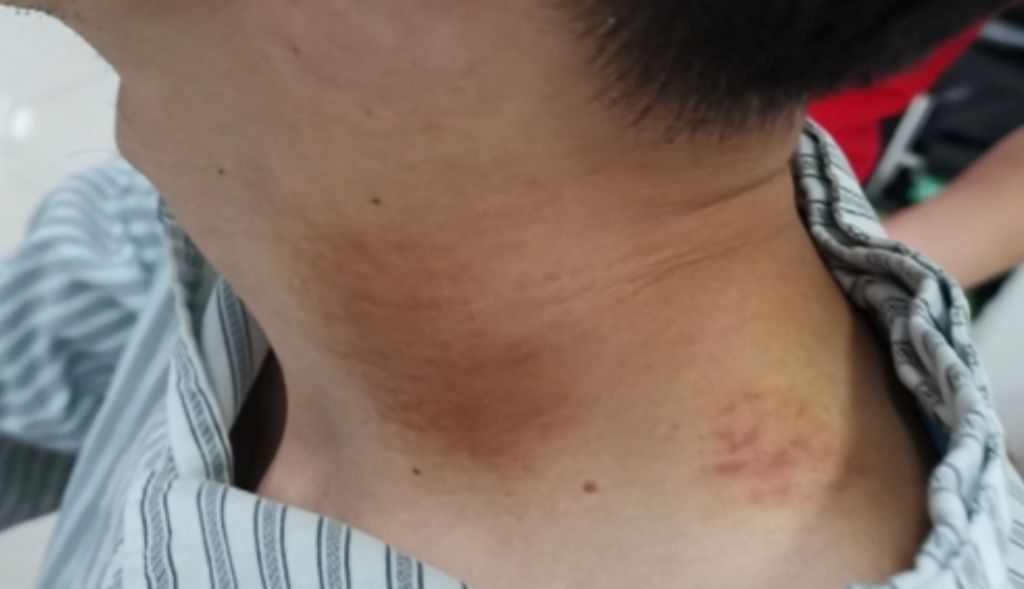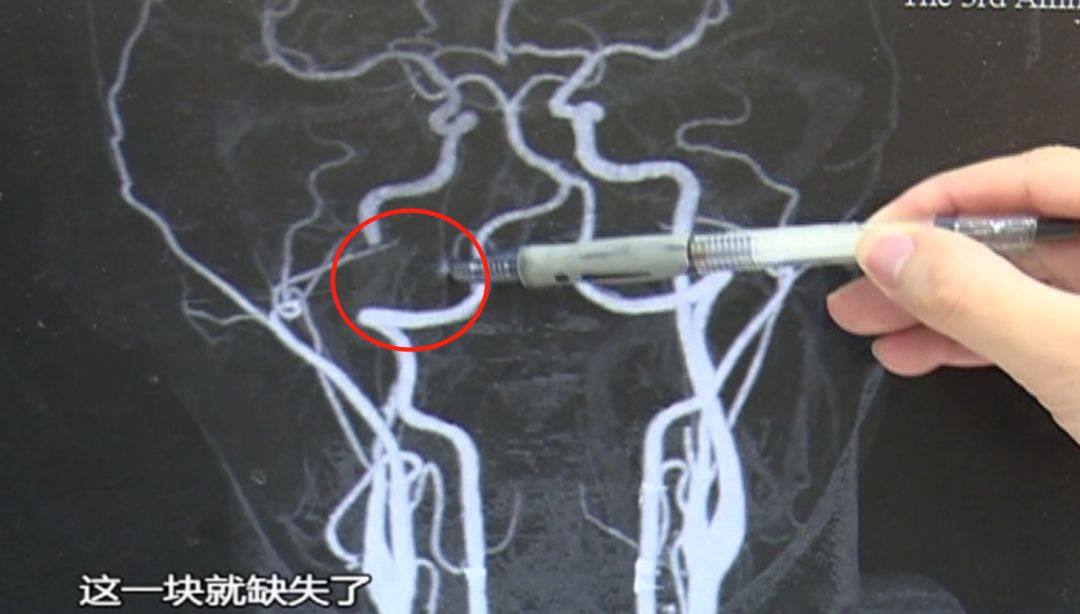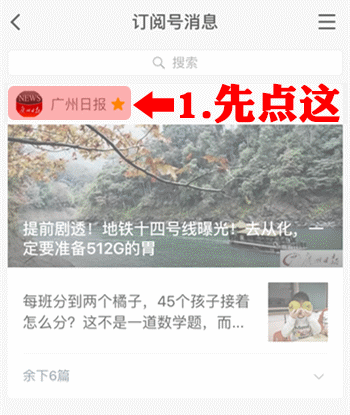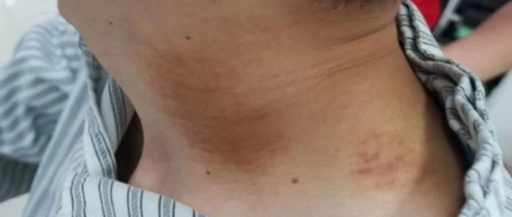Many people often feel shoulder and back painand shout to go formassage and gua shato relax themselvesHowever,massage is not something you can just do anywhereMr. Zhao from Guangzhou encountered a serious issue↓ ↓ ↓
On October 17, 36-year-old Mr. Zhao suddenly felt blackness in his right eye and weakness and numbness in his left limbs. He went to the emergency department of Nanfang Hospital for treatment, where the emergency doctor suspected Mr. Zhao might be experiencingacute cerebrovascular accident (stroke)and immediately notified the hospital’s stroke team, opening a green channel for urgent examination. A head CT and MRI revealedmultiple acute scattered infarcts in the right cerebral hemisphere, and he was promptly given active medication treatment.
Mr. Zhao is so young,
and he has no underlying diseases,
how could he suddenly have a cerebral infarction?
 Dr. Ma, who received the patient, carefully inquired with Mr. Zhao and his family and learned that Mr. Zhaohad not been resting well recently and had experienced headaches, so he went to a nearby place for neck massage and gua sha therapy.Dr. Ma opened the patient’s collar and found faint red marks left by gua sha on both sides of Mr. Zhao’s neck.
Dr. Ma, who received the patient, carefully inquired with Mr. Zhao and his family and learned that Mr. Zhaohad not been resting well recently and had experienced headaches, so he went to a nearby place for neck massage and gua sha therapy.Dr. Ma opened the patient’s collar and found faint red marks left by gua sha on both sides of Mr. Zhao’s neck.

Dr. Ma immediately consulted with the neurosurgery department head, Dr. Huang Lijin, and both doctors highly suspected that Mr. Zhao had a carotid artery dissection. It is not uncommon for neck massage or gua sha to induce carotid artery dissection, as the hospital’s neurosurgery department has treated similar cases before.

To quickly confirm the diagnosis, Dr. Ma arranged for a CTA of the head and neck, which indeed revealed a long segment dissection of the right internal carotid artery. To clarify the condition of the dissected vessel, Dr. Huang Lijin immediately arranged for an emergency cerebral angiography, which confirmed a dissection approximately 7 cm long in the right internal carotid artery. After thorough communication with the family, a stent was placed in the neck under local anesthesia. Post-surgery, Mr. Zhao’s affected vessel was immediately repaired, and he had a satisfactory recovery without significant neurological deficits. Mr. Zhao is now preparing for discharge, but he and his family still feel a sense of fear looking back at the entire process.
Reminder: Carotid artery dissection is an important cause of stroke in young and middle-aged patients
Dr. Huang Lijin reminds us that the formation of arterial dissection includes tearing of the arterial intima and the formation of an intimal flap, allowing blood to seep between the layers of the vessel, causing arterial narrowing or even complete obstruction of the lumen, leading to ischemic neurological signs. Carotid artery dissection is a significant cause of stroke in young and middle-aged patients.
Neck hyperextension, rotation, or tilting, various sports activities, whiplash injuries, stretching, sudden neck movements, severe vomiting, or coughing can all cause carotid artery dissection. Manipulating the cervical spine through neck massageor even minor neck injuries have long been known as potential mechanical triggers for carotid artery dissection.
Dr. Huang suggests thatcitizens should minimize various neck massages, gua sha, and similar practices, and if necessary, seek evaluation or treatment at a reputable hospital to prevent carotid artery dissection. If there are signs of stroke after these procedures, it is crucial to seek medical attention promptly, as carotid artery dissection requires timely diagnosis and treatment, and most patients can achieve a cure.
Identification: “Stroke 120” is a quick recognition method suitable for Chinese people
How to quickly identify a stroke?China has introduced a rapid recognition method for acute stroke suitable for its citizens, known as “Stroke 120,” which is a strategy for quickly identifying stroke and taking immediate action:“1” represents “seeing one asymmetric face”;“2” represents “checking if both arms have unilateral weakness”;“0” represents “listening (zero) to see if speech is clear”If through these three observations, a stroke is suspected,immediately call emergency number 120.
Prevention: 80% of strokes are preventable
No matter how perfect the treatment, it is better than preventing a stroke from ever happening.In fact, aside from congenital factors such as vascular malformations, aneurysms, and familial clustering, up to 80% of strokes are preventable.First,control high-risk factors such as hypertension, hyperglycemia, hyperlipidemia, and heart disease.Lowering blood pressure, controlling lipids and blood sugar, and maintaining a healthy weight can reduce the risk of stroke; atrial fibrillation is an important cause of ischemic stroke, and it is recommended that patients with atrial fibrillation follow medical advice for anticoagulation therapy.Second,ensure a healthy lifestyle, which includes “reasonable diet, moderate exercise, quitting smoking, limiting alcohol, and maintaining emotional balance.”Daily life behaviors should pay attention to:1. Focus on a reasonable diet, with daily salt intake not exceeding 5g, reducing the intake of fatty and high-sugar foods, limiting cooking oil, and ensuring adequate daily water intake.2. Exercise according to one’s ability, primarily engaging in aerobic endurance activities involving large muscle groups, such as brisk walking, jogging, swimming, and tai chi, with a general activity level reaching moderate intensity.Avoid excessive fatigue and overexertion.3. Overcome bad habits (smoking, excessive drinking, prolonged sitting, etc.).4. Pay attention to climate changes and maintain emotional stability.5. The elderly should prevent rapid changes in posture and avoid constipation.6. Regular health check-ups to detect problems early and treat them promptly.It is particularly important to note thatmany health check-ups do not focus on cerebrovascular health, and it is recommended that individuals over 50 undergo a cerebrovascular examination as a precaution. If there is a family history of cerebrovascular aneurysms, individuals aged 40 and above should consider undergoing CTA or MRA screening. If there are high-risk factors or early vascular lesions, annual transcranial Doppler or carotid ultrasound should be performed to monitor and even rule out 20%-30% occlusion rates.
Comprehensive report from Guangdong Public DV Scene (GDGGDVXC)
Guangzhou Daily All-Media Text Reporters Zhou Jieying, He Xuehua, Correspondents You Hualing, Hao Li, Zhang Lanxi, Jin Ting
Guangzhou Daily All-Media Editor Lu Kaisheng
Star Mark Public Relations
Want to find the latest news from the Public Relations team first?
It’s simple,
just find the Public Relations team,
click the top right corner to mark as a star.

▼Hot Topics, Click to View▼
Refusing to shake hands with masked graduates, the president of Hong Kong Polytechnic University shows integrity!
“Dad, are you coming to my house to play tomorrow?”
A nurse secretly took two bottles of medicine after work, and her colleague was shocked by her WeChat and immediately reported to the police!
Another new holiday has been set! Starting November 1, will you be able to take a break?


